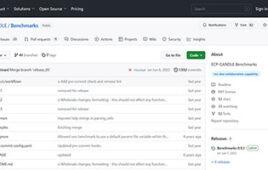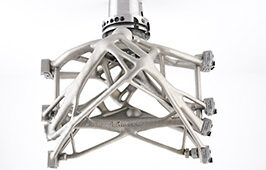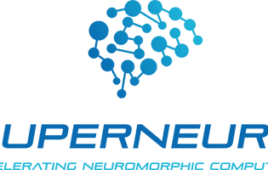Have you ever stopped to wonder exactly how it is that you can smell popcorn a mile away and instantly identify it? It is a split-second combination of a specific olfactory receptor in your nose smelling the buttered popcorn chemical, called diacetyl, which causes the nervous system to activate a cell that travels a pre-determined pathway directly to your brain.
In the early 1990s, we didn’t know this was the case. In fact, we didn’t even understand the molecular under-pinnings of most of the human senses. That is, until neuroscientist Cornelia “Cori” Bargmann, Ph.D., mapped out the pre-determined pathway in Caenorhabditis elegans as one of her fi rst big breakthroughs in neurobiology.
Nowadays, Bargmann is the president of science at the Chan Zuckerberg Initiative, a brandnew philanthropic organization that brings together world-class scientists from all disciplines, with the goal to provide scientists with the tools they need to make this world a better place.
You don’t become the president of a $3 billion initiative overnight. It takes untold hours of lab work, countless literature reviews, creative ambition and an unwavering imagination.
All about the brain
Bargmann first understood she was destined to become a scientist in high school when she realized science was the one subject she could not only learn, but also physically master.
“With your own hands, your own eyes, you could discover something that had never been seen before,” Bargmann exclusively told R&D Magazine. “As soon as I knew that, I was hooked. It was the combination of learning and doing—that was it for me.”
With a degree in biochemistry from the University of Georgia, Bargmann chose to get her doctorate from MIT, working in the lab of Robert Weinberg at perhaps one of the most exciting times in molecular biology—scientists were just starting to discover the different kinds of genetic mutations that drive human cancer cells. Alongside Weinberg, Bargmann examined the molecular mechanisms of oncogenesis, helped identify the role of Ras in bladder cancer, and discovered a mutated gene that ultimately became the foundation of the breast cancer drug Herceptin.
Still, something was missing for Bargmann.
“It was just an incredible time, it was an incredible thing to learn, and I loved it,” Bargmann recalled. “And yet, I felt like my imagination was captivated more by problems of understanding the brain, and I really wanted to study how the brain worked.”
That led to Bargmann completing a postdoctoral fellowship with H. Robert Horvitz at MIT, studying the molecular mechanisms of neuroscience, before she accepted a faculty position and her own laboratory at the University of California San Francisco (UCSF).
Bargmann brought her passion for studying C. elegans over to her lab at UCSF, and later to Rockefeller University, where she has been the head of the Lulu and Anthony Wang Laboratory of Neural Circuits and Behavior since 2004.
The transparent 1-mm-long C. elegans worm was perfect for Bargmann’s intended research, given the comparative simplicity of its brain. The organism has just 302 neurons and 8,000 synapses, compared with a human brain that boasts billions of neurons and 100 trillion synapses. So, yes, studying the cellular pathways of molecules tied to sense of smell was bound to be a bit easier in C. elegans than humans.
Two breakthroughs in particular fueled Bargmann’s research, elevating her to one of the leading olfaction researchers in the world.
C. elegans can detect thousands of different odors, including diacetyl. However, in experiments, Bargmann discovered if she knocked out one specifi c olfactory receptor, the worms could not detect the smell of diacetyl at all.
“It was formal proof that these are the molecules involved in smell, and it told us something about the sense of smell, which is that the molecules were actually not like light sensors that can detect almost everything and put things together by combination, but were really very specifically dedicated to relatively small numbers of related molecules. It gave us an initial map of how the olfactory system detects the world of odors,” Bargmann explained.
When their olfactory receptors are on and they are capable of smelling diacetyl, C. elegans are usually highly attracted to the buttery smell, which led Bargmann to her next research questions: how does one go from smelling an odor to an evaluation of whether that odor is good, bad or indifferent? And what matches behavior to an odor?
Sensations related to behavior
To answer those questions, Bargmann took the worm’s diacetyl-smelling receptor and genetically placed it in a different olfactory neuron—the one that normally detects odors the worm found unpleasant. That transgenic organism receded from diacetyl in experiments, as well as other odors it was normally highly attracted to.
What that proved was the idea that sensations are related to behavior. From the very first nerve cell detected, the nervous system knows by the activation of that nerve cell whether the stimulus is good or bad, and it matches that to behavior. Rather than being a complex arrangement assembled in the human brain—such as how sense of sight works—sense of smell goes all the way up to the periphery.
“This principle of pre-determined pathways turns out to be a general principle that was later applied to other animals. There is a specifi c pathway from a cell directly to your brain that decides if you are going to lick and eat that thing, or whether you are going to spit it out immediately, based on that pre-wiring, pre-pattern that establishes the approach or rejection of a different taste,” Bargmann explained.
While discovering the genetics behind sense of smell was a novel, important breakthrough, that was not the only lesson learned. The principle of pre-determined brain pathways was later confirmed in more complex mammals—and this is what really got Bargmann going.
“I am extremely motivated by the idea that you should be able to apply principles across different systems, different problems, different animals,” she said. “[I am] really excited by the possibility of moving between systems.”
As it turns out, this motivation serves Bargmann well at Rockefeller University—where she still holds her head of laboratory position—as well as at the Chan Zuckerberg Initiative, where collaboration between scientists and engineers is the very cornerstone of the program.
The Chan Zuckerberg Initiative enters the picture
In December 2015, Mark Zuckerberg, the creator of Facebook, and his pediatrician wife Dr. Priscilla Chan, announced their intention to give away the vast majority of their wealth through the Chan Zuckerberg Initiative (CZI), a philanthropic organization dedicated to “advancing human potential and promoting equal opportunity.”
The $45 billion initiative originally focused on education, but the couple always had the sciences in their sights. It took them two years in the field, talking to scientists, engineers and others, to devise a suited foundation for what they wanted to accomplish. It also took them two years to find the right leadership for the $3 billion science initiative.
“We resonated very quickly,” Bargmann recalled.
The goal of the Chan Zuckerberg Science Initiative, announced in September 2016 with Bargmann as its president, is to support science and technology that will make it possible to “cure, prevent or manage all diseases by the end of the century.”
Ambitious? Yes. Impossible? Bargmann doesn’t think so.
She points out that “cure, prevent or manage” provides options—it recognizes that not every medical condition has a solution, but many of them do. We just don’t know them yet. It was actually the “end of the century” part that really piqued Bargmann’s interest in CZI.
The end of the century is 83 years away. Looking back that many years, the year is 1934, and four of the top 10 causes of death are bacterial diseases—all of which can now be cured easily with modern antibiotics. Back then, there was no chemotherapy for cancer, let alone the immuno-oncology approaches of today. We didn’t understand cardiovascular diseases, nor were there stents or bypass surgery.
“I can look in my own lifetime,” Bargmann said. “I can look at HIV/AIDS and the horrible disease it was when it appeared in the 1980s, and what it is now, which is a serious but manageable disease. I can see incredible advances that have been made in medicine that come from science. If you look at something like that and look at what had happened in the thousands of years before that, there’s no reason to think we could not make equally great or much more progress in the next 80 years.”
One way CZI plans to do that is through engineering.
“At our current pace maybe you could cure, prevent or manage all disease in 1,000 years, and that’s where Mark Zuckerberg comes in because he’s an engineer. Engineers are good at doing anything faster. We’re saying, ‘hey, we think this is possible in 1,000 years, how about we try to do it in 100 instead?’,” Bargmann said.
The other two ways of achieving CZI’s ambitious mission are collaboration and tool building.
Introducing the Biohub
Bargmann describes herself as the most basic of basic scientists. That’s a good thing for CZI since its core principles are based around the idea of basic science as the engine of discovery.
“When we look out over the landscape, we see many people who are interested in taking the last step in developing a drug, in developing a treatment, but we have a longterm horizon where we can take the early steps to make those late steps possible. We can fill in at that early stage of the game,” Bargmann explained. “We’re taking a couple of general principles and trying to see where we can have a differentiated impact in basic science and technology. One of the ideas we’ve identified is the importance of collaboration between scientists and engineers, and putting together people from these different disciplines.”
The funding and establishment of the Biohub in Northern California was not only the first step toward collaboration, but also the first order of business for Bargmann and CZI. It was announced the same day as the science initiative itself.
The $600 million Biohub serves as a collaboration point for three of the top research institutions in the country—Stanford University, the University of California San Francisco and the University of California Berkeley. Head-quartered next to UCSF’s Mission Bay campus, the Biohub—which operates independently from CZI—is designed to create synergy among the three research universities and provide basic researchers and clinical scientists with flexible laboratory space, as well as the latest technological tools and funding for ambitious research projects.
“These are fantastic institutions, and yet, they had never really tried to collaborate on anything before,” Bargmann said.
Bargmann, Chan and Zuckerberg appointed two co-presidents to run the Biohub—UCSF scientist Joseph DeRisi and Stanford engineer Stephen Quake. DeRisi, the co-discoverer of the SARS virus, is renowned for his use of genomic technologies in the study of malaria and viruses, as well as the diagnosis of unknown infections. Quake has invented many widely used biological measurement technologies, including microfluidic devices that are the biological equivalent of the integrated circuit, as well as the first non-invasive prenatal test to replace amniocentesis.
One of the Biohub’s fi rst big projects is to help create the Human Cell Atlas, a toolkit comprising comprehensive reference maps of all the cells in the human body. Once the global, collaborative project is complete, the Human Cell Atlas will serve as a fundamental basis for understanding human health and diagnosing, monitoring and treating disease.
Every disease has a cellular basis—disease itself is the result of a cell or group of cells in the human body not functioning. A complete Human Cell Atlas would provide a unique ID card for each cell type, a 3D map of how cell types work together to form tissues, knowledge of how all body systems are connected, and insights into how changes in the map underlie health and disease. In the long run, such an atlas would allow scientists and engineers to identify which genes associated with disease are active in human bodies and where—and analyze the regulatory mechanisms that govern the production of different cell types.
“This is a big project, like the Human Genome Project, except for cells. There are only 25,000 human genes, and there are 30 trillion human cells,” Bargmann said. “I can’t tell you exactly the disease the Human Cell Atlas is going to solve, but I know that having this foundational information will enable us to approach many diseases from many different angles.”
The Biohub’s Infectious Disease Initiative will explore new ways to create drugs, diagnostic tests and vaccines to fight against the many infectious diseases that still threaten much of the world, such as HIV, Ebola and Zika. This project will also include a Rapid Response Team that can immediately devote world-class scientists and advanced research technology to develop new ways to fight a sudden outbreak.
Conquering the data deluge
Mapping 30 trillion human cells does raise some issues, namely, how much data will be produced and how will it all be analyzed?
CZI is well-posed to answer that question. The foundation has a distinct advantage—Mark Zuckerberg, one of the most successful engineers in the world.
Bargmann said between Zuckerberg and their location in Silicon Valley, CZI is able to recruit software engineers who are excited by the mission of working on scientific problems. The in-house engineering team is already partnering with scientists to create a data infrastructure and platform that will be able to handle the data deluge of the Human Cell Atlas project.
With big data, however, the work is never complete. Data and knowledge sharing is still one of Bargmann’s top, most immediate priorities for CZI.
In January 2017, CZI acquired a Canadian-based company named Meta, which had developed an artifi cial intelligence (AI) platform to help scientists read, understand and prioritize the thousands of scientifi c papers that are published each day
In biomedicine alone, around 4,000 scientific papers are published each and every day—and most of them go unread by scientists. Meta is a tool that will help fill the gap between volume of research and a scientist’s knowledge. It uses artificial intelligence to analyze and connect insights across millions of papers. AI seeks out the most relevant or impactful studies in a scientifi c area the moment they are published, and finds patterns in the literature on a scale no human being could accomplish alone.
“We think this is a great example of speeding everyone’s science by making them aware—helping them understand and interpret and act on the scientific literature. And it’s helping scientists share what they know more quickly with each other,” Bargmann said.
Once Meta is ready, CZI will offer its tools and features for free to all researchers. This remarkable access is in line with the CZI’s overall goals, and the Initiative’s commitment to open-access. For example, all data from research performed at the Biohub will be published in open-access channels and journals, and the Biohub facility is open-access itself, meaning researchers outside of the three universities are welcome to visit and use the high-tech equipment.
In April 2017, Bargmann announced that CZI would be collaborating with Cold Spring Harbor Laboratory (New York) to help support its online platform, bioRxiv, a free service that enables life science researchers to share drafts of their papers before they appear in journals. Preprint repositories like this can complement and even augment the peer-review process by making scientific results available instantly to be discussed, shared and improved upon by the entire community before publication.
Along with funding for current operations, CZI’s support will enable Cold Spring Harbor Laboratory to hire additional staff to help scale up bioRxiv, and allow the conversion of author-submitted content files to machine-readable formats.
“[bioRxiv] was being run by two guys in a basement in Cold Spring Harbor Laboratory. We really wanted to express our enthusiasm for this willingness of scientists to share their knowledge with each other earlier, and supporting bioRxiv is a way of doing that,” Bargmann said. “We want to work with the leaders of the field, we want to find people who are doing imaginative things wherever they are, and that includes finding people like bioRxiv and telling them ‘good job,’ or building out our own systems, or partnering with others to make that kind of progress.”
As Bargmann rounds out her first year at the helm of CZI science, there’s a lot to be proud of in the short time. The Biohub’s first class of investigators is rolling, with research projects ranging from a $1 foldable microscope to targeted therapies for autoimmune disorders. And the Initiative is in the process of selecting scientists for its Collaborative Computational Tools team for the Human Cell Atlas project.
It’s going to be long journey to the end of the century, to a time when—if Bargmann and CZI have anything to say about it—all human diseases will be cured, managed or prevented. Unfortunately, Bargmann won’t be around in 2100 to see the fruits of her labor, but that doesn’t matter much to her.
“The best thing about science is the companionship of other scientists and learning from them. Sometimes I feel like my own work is just the ticket to the party,” she said. “It’s exciting to have this long timeframe and this ability to add to the existing system. There’s a lot of very successful things in science right now, but there’s always room to do more, always room to try something new, and I just feel incredibly fortunate to have this opportunity.”





